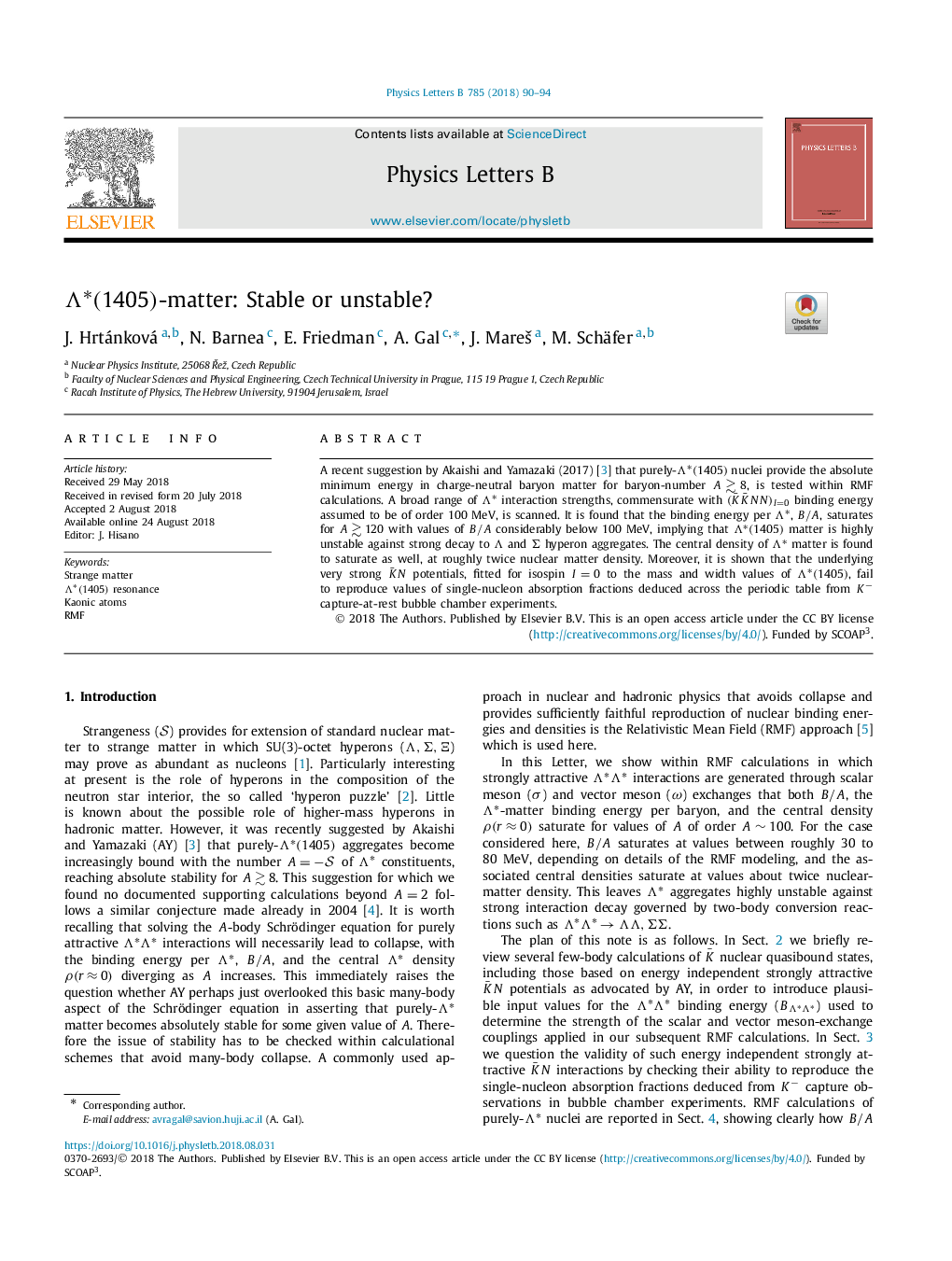| Article ID | Journal | Published Year | Pages | File Type |
|---|---|---|---|---|
| 10136674 | Physics Letters B | 2018 | 5 Pages |
Abstract
A recent suggestion by Akaishi and Yamazaki (2017) [3] that purely-Îâ(1405) nuclei provide the absolute minimum energy in charge-neutral baryon matter for baryon-number Aâ³8, is tested within RMF calculations. A broad range of Îâ interaction strengths, commensurate with (K¯K¯NN)I=0 binding energy assumed to be of order 100 MeV, is scanned. It is found that the binding energy per Îâ, B/A, saturates for Aâ³120 with values of B/A considerably below 100 MeV, implying that Îâ(1405) matter is highly unstable against strong decay to Î and Σ hyperon aggregates. The central density of Îâ matter is found to saturate as well, at roughly twice nuclear matter density. Moreover, it is shown that the underlying very strong K¯N potentials, fitted for isospin I=0 to the mass and width values of Îâ(1405), fail to reproduce values of single-nucleon absorption fractions deduced across the periodic table from Kâ capture-at-rest bubble chamber experiments.
Keywords
Related Topics
Physical Sciences and Engineering
Physics and Astronomy
Nuclear and High Energy Physics
Authors
J. Hrtánková, N. Barnea, E. Friedman, A. Gal, J. MareÅ¡, M. Schäfer,
